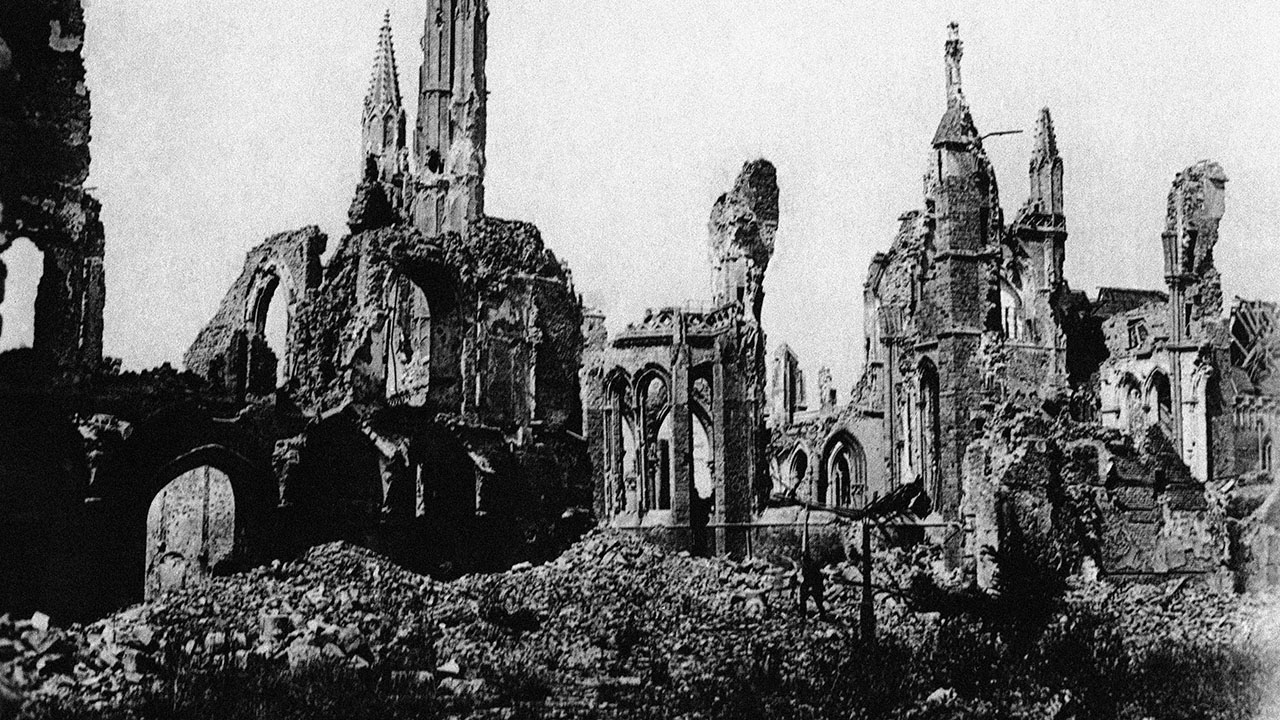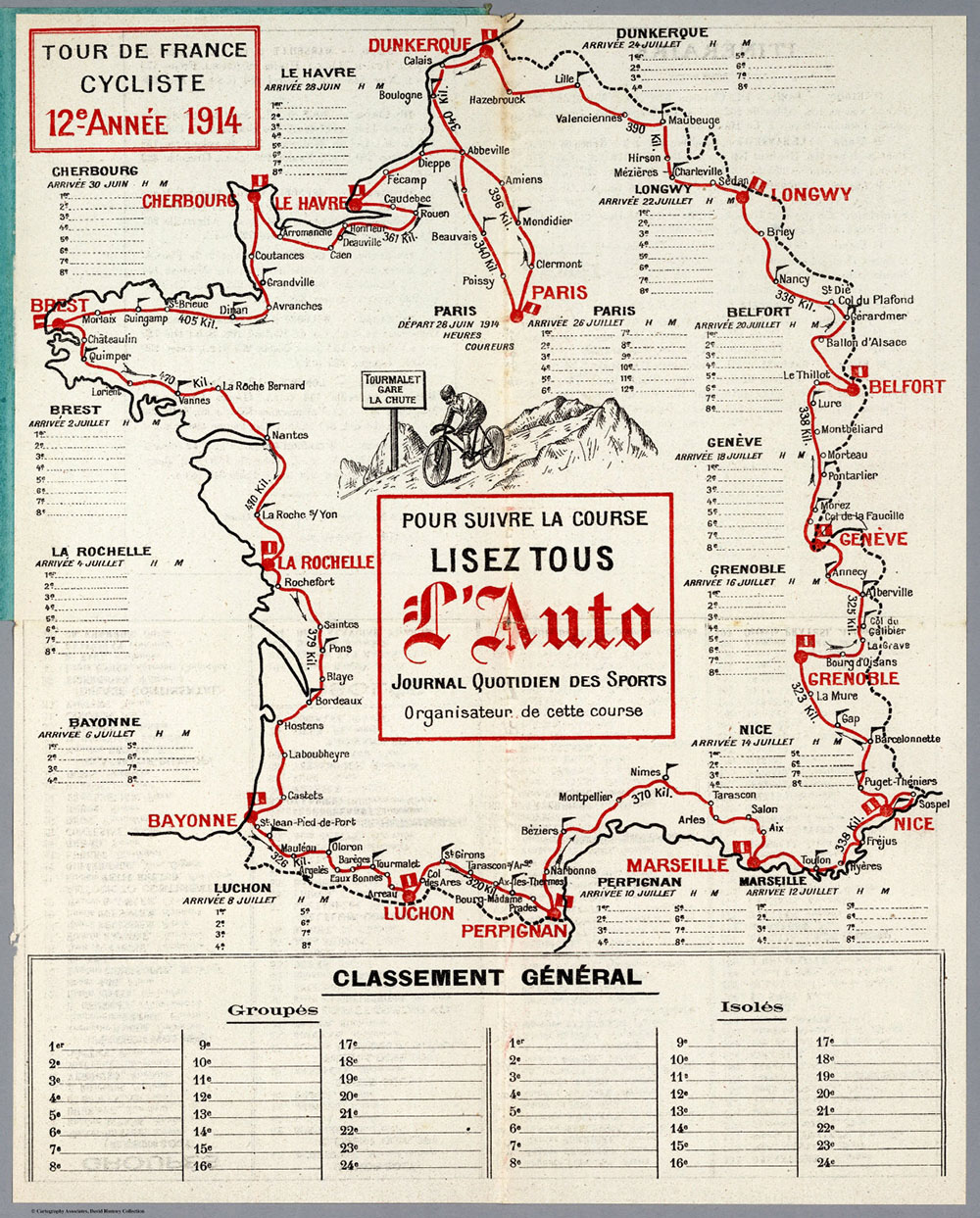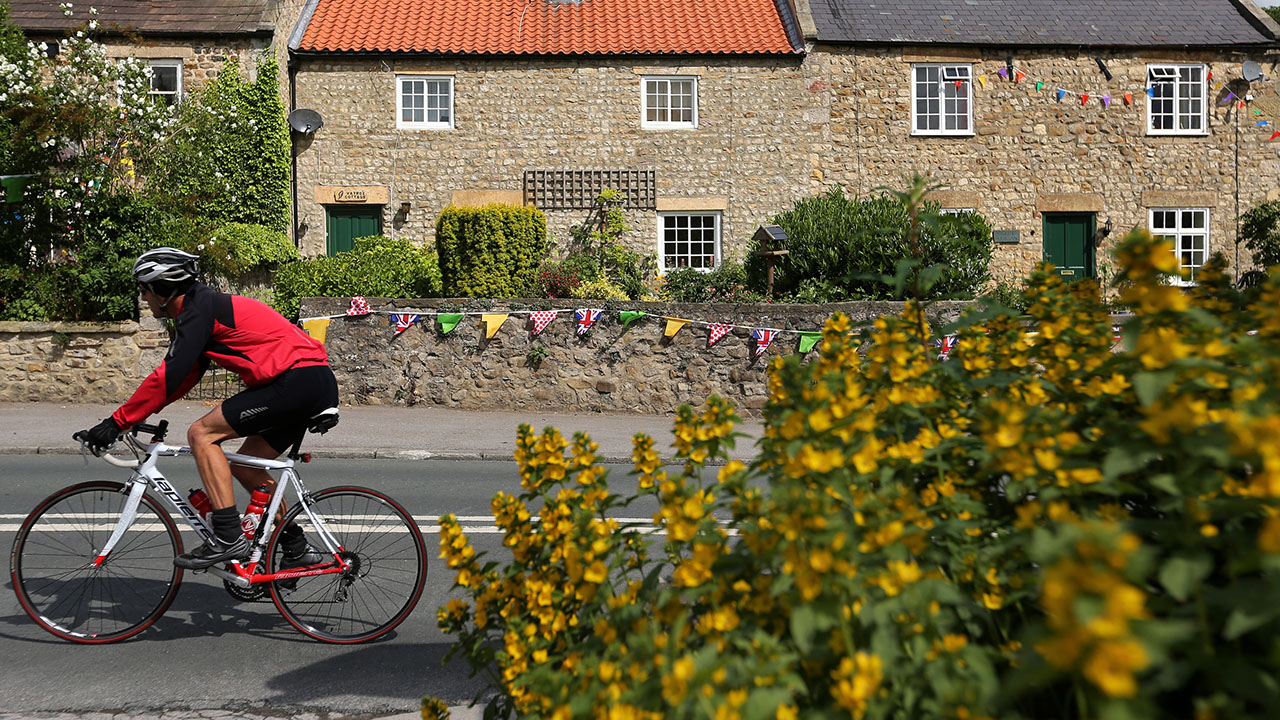Just two days after the finish of the 1914 Tour de France, Europe was changed forever by the start of the first World War. Despite the mobilizations already underway for war, the 12th edition of the Tour snaked through the French countryside, with 15 stages from start to finish. Any excitement and entertainment offered by the battles between riders on mountain roads was replaced all too soon by the gruesome realities of 20th century warfare.
Marking the 100th anniversary of the start of World War I, the 2014 edition promises exciting stages that extend beyond French borders, tracing lines through landmarks from battles a century ago.
Le Grande Depart takes place in England this year, with the first day a sprinter’s affair finishing in the hometown of Mark Cavendish’s mother. The Manx Missile has carved out an impressive set of palmares but a chance to wear the yellow leader’s jersey at the biggest race in cycling has eluded the star. A sprinter in yellow is a rare sight at the Tour de France so competition in the final lead out will be fierce.
The teams will spend two more days racing in England with the third stage finishing on the Mall, in front of Buckingham Palace, in a repeat of the finish at the London 2012 Olympic Games.
Following the transfer to France, Stage 4 immediately detours into Belgium where the race remains for an overnight.
Stage 5 starts in Ypres, site of one of the most famous battles of the Great War, especially memorable for the efforts of Canadian soldiers. The route the racers will take travels over some cobbled sections of road used in the formidable Paris–Roubaix one-day spring classic. Riders tend to be excitable the first week of the Tour de France, which often leads to crashes or near misses. During this stage the greatest risk comes not on the cobbles themselves, but in the race to be at the front when the peloton reaches the pavé.
 The cathedral in the town square of Ypres, Belgium, in ruins after the bombing during World War I. (AP)
The cathedral in the town square of Ypres, Belgium, in ruins after the bombing during World War I. (AP)
A day after paying tribute to the battle of Ypres, the Tour leads from Arras to Reims, past the battleground of Chemin des Dames. Cornflowers are worn to commemorate the battles of 1917, and will be given during the awards ceremony at the end of the stage.
On Stage 8, the peloton races into the mountains for the first time in the 2014 edition. Three categorized climbs late in the 161km distance force riders to finish on a steep uphill after already brutal 16 percent grade sections. With a generally flat start, this stage is not considered a full mountain stage despite the slopes in the second half.
Legendary climbs such as Mont Ventoux, Col du Galibier and Alp d’Huez won’t be part of the 2014 route. Instead, six mountain stages are on the 2014 schedule, including five uphill finishes.
La Planche des Belles Filles marks the finish of the first true mountain stage of the 2014 Tour. Stage 10 snakes up and over five major climbs before demanding one final effort for an uphill finish. The demands on this day are harsh, and could prove to be decisive in the general classification. It’s likely that the cyclists will go all out with the next day slated as a rest day.
Less than a week later, the peloton will finish their time in the Alps, with a ride over the Col d’Izoard during Stage 14. The Col measures 2,360m and marks the highest point on the 2014 route.
From there, the tour shifts west to the Pyrenees mountains. Though the final big mountain day leaves three days of racing to the finish in Paris, the two climbs of Stage 18 will be where the best climbers will cement a lead. The climb up the Col du Tourmalet offers a chance to weaken the peloton before the final ascent on the Hautacam, a 13.6km grind to the day’s finish.
The final three days run over flatter terrain. The individual time trial on the penultimate day is unlikely to cause big shifts in the general classification. The race against the clock is the only such stage of the 2014 Tour de France, no doubt a blow to the top riders who typically use time trials to build an advantage over a grand tour. At only 54km, there is limited opportunity to have an effect overall.
Tracing a line through western Europe and 100 years of history, the 2014 Tour de France pays tribute to legends of the battlefield and of cycling.
 An illustrated map of the Tour de France that took place in 1914. (Wielermuseum/AP)
An illustrated map of the Tour de France that took place in 1914. (Wielermuseum/AP)


